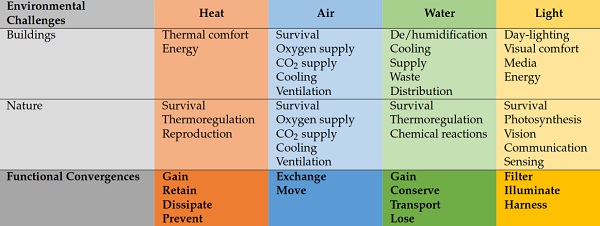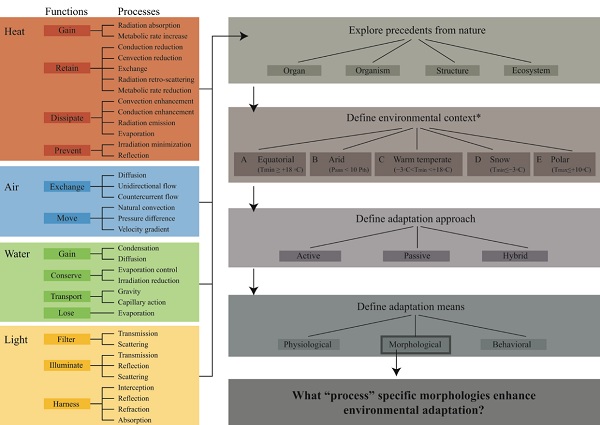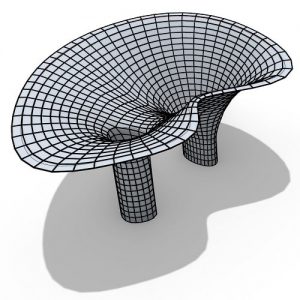Form Follows Environment
Form Follows Environment: Biomimetic Approaches to Building Envelope Design for Environmental Adaptation
Lidia Badarnah
School of Architecture, Massachusetts Institute of Technology, Cambridge, MA 02139, USA

Figure 1. From left to right: the free form envelope of the Kunsthaus in Graz, used with permission ©Heribert Pohl; the turbines of Council House 2 in Melbourne, courtesy of Nick Carson; the façade of the BIQ building consisting of algae filled panels, used with permission ©NordNordWest; the bending façade of One Ocean Thematic Pavilion, photos courtesy of SOMA.
Building envelopes represent the interface between the outdoor environment and the indoor occupied spaces. They are often considered as barriers and shields, limiting solutions that adapt to environmental changes. Nature provides a large database of adaptation strategies that can be implemented in design in general, and in the design of building envelopes in particular.

Figure2. Left: mangrove habitat in Costa Rica. Middle: mangrove root system in direct contact with salty water. Right: the deposition of salt in the form of crystals on older leaves close to falling, courtesy of Peripitus.
Biomimetics, where solutions are obtained by emulating strategies from nature, is a rapidly growing design discipline in engineering, and an emerging field in architecture. This paper presents a biomimetic approach to facilitate the generation of design concepts, and enhance the development of building envelopes that are better suited to their environments.

Figure 3. Morphological variations in cacti as an adaptive response to their harsh environments, photos courtesy of (from left to right): Axsom, Topinambour, Johansson, and Mattdooley40.
Morphology plays a significant role in the way systems adapt to environmental conditions, and provides a multi-functional interface to regulate heat, air, water, and light. In this work, we emphasize the functional role of morphology for environmental adaptation, where distinct morphologies, corresponding processes, their underlying mechanisms, and potential applications to buildings are distinguished.

Figure 4. Left: a group of huddling penguins, which consists of about 2500 males, reproduced from Gilbert et al.. Middle: a closer view of huddling penguins, courtesy of Australian Antarctic Division. Right: infrared image of penguin, photo credit: Université de Strasbourg and Centre National de la Recherche Scientifique (CNRS), Strasbourg, France.
Emphasizing this morphological contribution to environmental adaptation would enable designers to apply a proper morphology for a desired environmental process, hence promoting the development of adaptive solutions for building envelopes.

Table 1. Identifying functional convergences (key functions) for different environmental challenges in buildings and in nature.
Biomimetics is a rapidly growing discipline in engineering, and an emerging design field in architecture. In biomimetics, solutions are obtained by emulating strategies, mechanisms, and principles found in nature. Due to the multidisciplinary nature of biomimetics, designers often tackle difficulties throughout the design process, where biophysical information is not easily accessible.

Figure 6. Combined exploration model of four environmental aspects, relevant functions, corresponding processes, and the procedures to identify morphological means for adaptation. * According to Koppen classification.
One of the challenges in implementing biomimetics lies in the search for, and the selection of, appropriate strategies from the large database found in nature. Thus, the establishment of a systematic way to devise adaptation solutions is a significant initial step towards a biomimetic design that is capable of regulating air, heat, water, and/or light.




























Comments
Tanane
Nicely !
rezae
^-^Thank you